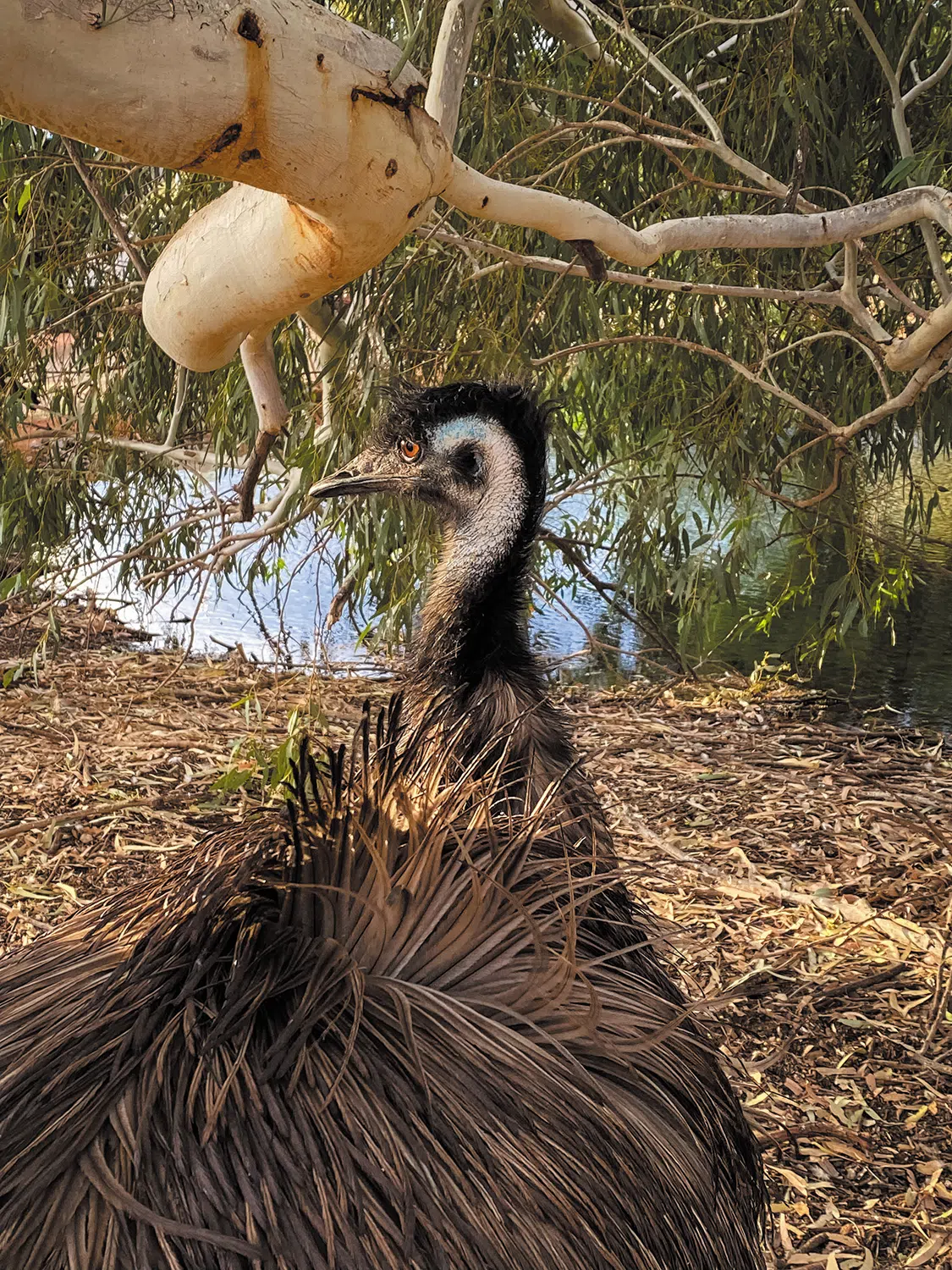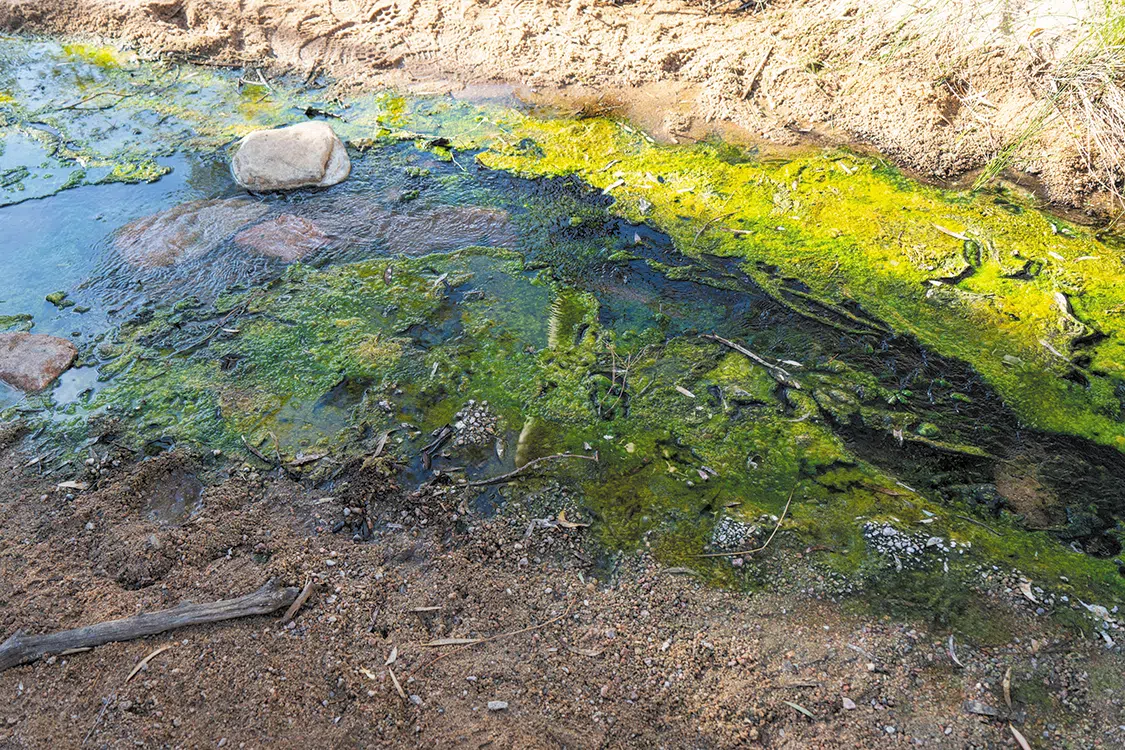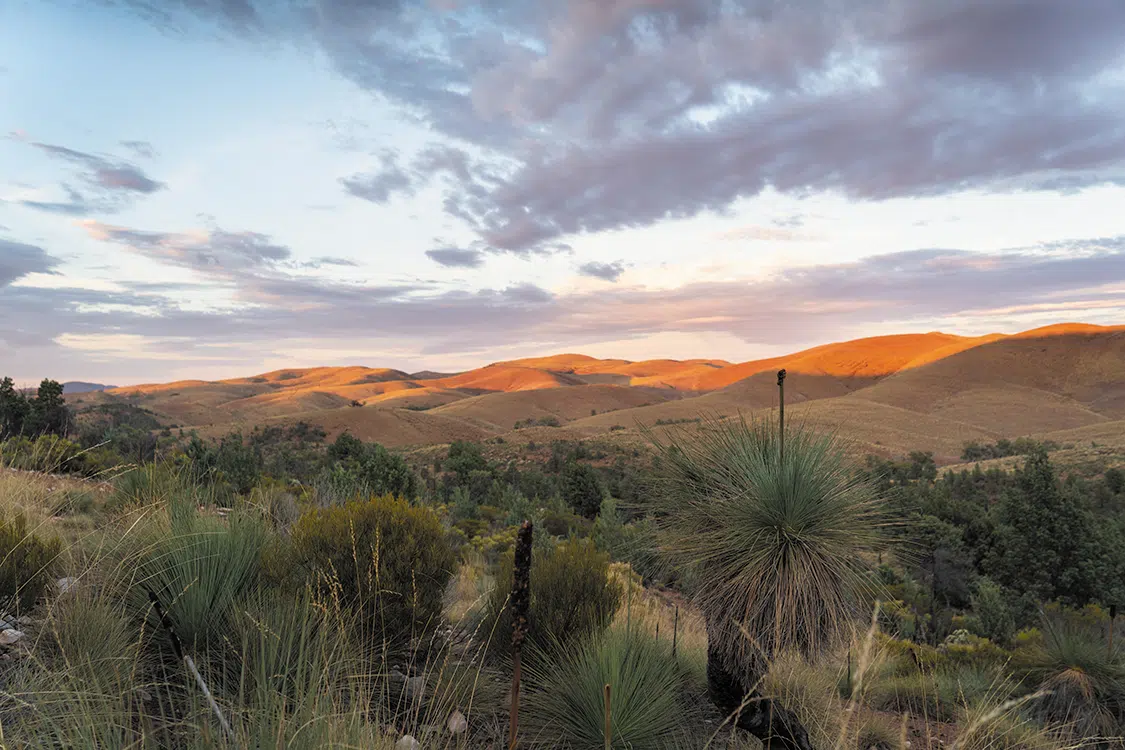 Dan Grec
.
September 23, 2024
.
Tread
Dan Grec
.
September 23, 2024
.
Tread

The Australian continent has an average elevation of about a thousand feet, which means anything taller than a speed bump in the otherwise flat-as-a-pancake landscape is probably worth a look. In the case of the Flinders Ranges in South Australia, we’re talking about a genuine mountain range that stretches more than 260 miles from north to south, and has peaks stretching up to 3,900 feet in height—genuinely tall by Australian standards. Like all of Australia, these rocky and rugged mountains are seriously old and were formed somewhere around 500 million years ago. Local Aboriginal people have called the area home for more than 50,000 years. With a smattering of wild canyons, dusty tracks, hot springs, and ancient Aboriginal history to explore, there was plenty to keep us busy for a couple of weeks in the Outback.
While the bustling national park and centrally located Wilpena Pound are the most well-known attractions, as usual, it’s everything far from the beaten path that interests me most.



Always preferring wild and remote places, I’ve never paid to go four-wheel driving, and I always thought it was a strange way to spend money. With so many wild places to explore, I always figured I would rather be out in the middle of nowhere, and Australia was the last place I ever expected to pay for four-wheel driving.
Virtually all of the Flinders Ranges is a national park, and while there are plenty of beautiful places to explore, there really isn’t much genuine four-wheel driving owing to it being a protected park. What the region does have, however, is a slew of privately owned cattle stations and farming properties, some of which are the size of small cities. More than a few have capitalized on the hordes of Aussies arriving in well-equipped vehicles looking to explore far and wide. Not only do these cattle stations offer luxury camping, they add the option of four-wheel driving while exploring their vast properties.



Most famous among them is Skyline Drive, situated on Willow Springs Station cattle station, which encompasses some 70,000 acres and has been in continuous operation since 1924.
Early in the morning we made a start on Skyline Drive, not entirely sure what to expect. Paying $80 for a day in my own Jeep is not exactly my idea of a good time, but I couldn’t help thinking ‘when in Rome’ and all that. The first half of the drive,which took half the day, led us through extremely barren and rocky landscapes as we read information on the provided information sheet about the sights around us. A few small muddy sections and rocky climbs broke up the long drive, and when we dropped down into a stunning rock canyon things got really interesting. After crawling through the dry river bed for twenty minutes we soon tackled the meat of Skyline Drive, starting with a loose rock climb straight up the ridgeline of a mountain. With the Jeep in low range we had no trouble with traction, and as we topped out with commanding views to mountains all around us, the name of the track suddenly made a lot of sense.
As the sun kissed the distant mountain tops making the red earth even brighter I declared this had been a day well spent.



A few days later, we were on a corrugated gravel road heading northeast away from the busier central Flinders Ranges area. As the shadows grew long I realized I had underestimated distances once again, and we needed to find a campsite for the night. With no idea what to expect we made a turn for Chambers Gorge, and almost immediately I knew we were on a good thing. We drove along a rocky and mostly dry riverbed, constantly zig zagging from one side to the other in what was slowly becoming a tall gorge. The setting sun lit the way to a towering mountain, and after navigating a few small river crossings and mud patches we found ourselves at the foot of towering Mount Chambers—the perfect place to call home for the night. After climbing out of the riverbed we had commanding views of the rolling hills in the near distance, and the ever present peak at 1,341 feet provided a stunning backdrop to watch the mighty Milky Way slowly appear. As we cooked dinner to the sounds of utter desert silence we couldn’t help but pinch ourselves at our good luck in stumbling across this amazing wild paradise.



With the entire gorge to ourselves, our night was still and silent, and we both slept like rocks while surrounded by a whole lot of, well, rocks.
In the morning we set out on foot to explore high and low all along the spectacular gorge, with the highlight being incredible Aboriginal rock art carved into the rock walls. The Adnyamathanha Aboriginal people have lived in this area for roughly 50,000 years, a fact I can hardly comprehend given how barren and dry the entire area is.


The Flinders region is well known for incredible wilderness hiking, and Katie and I took every opportunity to stretch our legs outside the Jeep. We tackled the tallest mountain in the range, St. Mary’s Peak, and thoroughly enjoyed the 360 degree views from the top. In the southern region while out on foot we spotted endangered rock wallabies, flocks of brightly colored birds that number in the hundreds, multiple mobs of emus and of course the standard kangaroos, lizards and a few snakes here and there. For years, hiking has been my favorite activity, and in my usual fashion I found it is well worth driving to the end of whatever gravel road we found ourselves on before setting out on foot into the wilderness.



As a self-proclaimed wilderness hot springs fanatic, I’m intrigued to learn as much as possible about Paralana hot springs—an adventurous drive out of Arkaroola in the far north of the Flinders Ranges. I’ve used remote hot springs as an excuse to get as remote as possible on five continents, and I jumped at the chance to learn about another lesser known one tucked away in Australia.
It might just be an obsession, because once I hear about a wild or remote hot spring I become fixated on locating it, even when that takes days of research and multiple attempts of four-wheel driving and hours and hours and hiking. The goal is a hot spring I can actually soak in, though for a variety of reasons that is not always possible. Sometimes they’re too hot or too cold, sometimes there simply isn’t enough water, and sometimes they look more like a swamp than an inviting natural hot tub. In the case of Paralana, however, things were a little different.



All across the globe, natural hot springs are created when water trickles deep enough into the crust of the earth to be heated by the earth’s core. Surprisingly, the water doesn’t need to get all the way down to actual lava—only a couple of miles down is enough to boil the water before it rises back to the surface, and hopefully bubbling out in a location I can actually get to.
The Paralana springs are not heated by the Earth’s core, but actually from the decay of radioactive elements. Australia has some of the largest known Uranium deposits in the world, and often it sits very close to the surface. In this particular case the natural Uranium is decaying fast enough to create heat, which in turn creates hot water. While this results in a lot of very hot water, it has the unfortunate side effect of making the water radioactive.


Back in the 60s this “special” water was thought to have healing properties, and a health retreat and spa were built and heavily used. A decade or so later they realized this was a very bad idea and was causing significant health problems, so it was all torn down. Not only is the water itself radioactive, but the gasses that bubble to the surface are also dangerous, and now it is strongly recommended not to touch the water, and not to spend more than twenty minutes in the area.
After a stunning drive through a rocky canyon it was more than a little unnerving to arrive at the spring to find a slew of signs warning of the radioactivity in the area.



There was a large flow of hot water bubbling to the surface and flowing down a small creek thick with green slime. Steam billowed off the water and I tried my best not to breathe it in and resist the temptation to test the water with my fingers.
Of all the hot springs I have explored in the world this is the only one directly heated by radioactivity, and despite not being able to jump in for a soak, the remote adventure to find it was well worth it. I hope for better soaking luck next time.


During our two weeks and well over one thousand kilometers roaming the wild corners of The Flinders Ranges we rarely saw another 4×4 on the tracks. We hiked during the day, and in the afternoons we repeatedly found stunning wild camps tucked under mountains or alongside dry riverbeds. Combined with stunning hiking, a unique hot spring and plenty of Aboriginal history, the Flinders is an extremely unique place that is absolutely not to be missed.
It is always worth turning off the beaten path and exploring into the unknown.
You never know what you’re going to find, but chances are it will be something special.

Join adventurer Dan Grec on his
expeditions around the world on
YouTube and Instagram
@TheRoadChoseMe. @TheRoadChoseMe
Editor’s Note: A version of this article appeared in TREAD July/August 2024
We use cookies to enhance your browsing experience, serve personalized ads or content, and analyze our traffic. By clicking "Accept All", you consent to our use of cookies. Visit our Cookie Policy for more info.
Notifications
Share Link